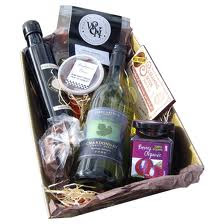Before the revolution in cooking technology that occurred in the latter years of the nineteenth century, the Southern kitchen wasn’t a particularly pleasant place to be.
From the founding of Jamestown until the middle of the nineteenth centuries, cooking for plantation and backcountry cabin was done on the open hearth. Site-made brick was the material of choice for fireplaces, hearths and chimneys, but it was extremely labor intensive to make and expensive, so its use was mostly restricted to the wealthy. In most Southern homes of the eighteenth and nineteenth centuries, fireplaces and chimneys were fashioned from locally procured stone. If stone was scarce, the chimney above the roofline of the cabin was often made of wattle and daub, which was essentially sticks held together with clay. While the stone hearths could withstand the high cooking temperatures, a layer of thick plaster usually protected the brick hearths.
The goal of all homeowners was to have the kitchen separate from the main house to cut down on noise, odors, smoke and the ever-present danger of the main house burning down if a kitchen fire got out of hand. As soon as they could afford the time to do so, settlers built another room onto their cabins, separated by ten feet or more from the original structure. The old house became the kitchen, and the newer structure with a smaller and less dangerous fireplace became the living quarters.
Plantations, which had large numbers of mouths to feed, almost always had separate cookhouses, usually wood frame buildings with brick or stone floors. The interior walls were usually wood plank rather than plaster, and whitewashed regularly to keep them clean from the accumulation of soot from the large hearths.
The hearths in these cookhouses were huge, sometimes ten feet wide and four feet deep. Andirons set six feet apart held the large supply of oak and hickory logs needed to stoke the fire. The fires were kept going all day and the coals were banked at night to make starting the next day’s fire easier. The heat from these fireplaces was horrendous, especially in the stifling summers of the Carolinas and Georgia. An oven for baking was usually built into the side of the fireplace on larger farms and plantations, while in the backcountry, ashcakes and hoecakes were baked in the coals.

These brick ovens were the height of luxury for those on the receiving end of the goodies they produced, but made the cook’s life even more difficult. Patricia Brady Schmit, in her introduction to Nelly Custis Lewis’s Housekeeping Book (1982) wrote: “The oven involved a great deal of labor to use and generated terrific heat in the kitchen, even beyond that of the usual roasting fire in the hearth. Therefore the oven was heated only once a week, and all major baking was done at that time. A strong fire was built on the floor of the oven very early in the morning and stoked so that it burned fiercely: the oven door was left ajar to provide oxygen for the fire.”
After the fire had burned down to coals, they were raked out and discarded; the oven, having retained the heat from the roaring fire, was now ready to use. Pans of bread dough, cakes, cookies and other items to be baked were placed in the oven in descending order by the amount of time they needed to bake; items that needed a short amount of time at high heat went in first. As the oven gradually lost its heat, items such as cakes that required longer baking times at lower temperatures took their place in the oven until all the baking for the week was done.
The fireplaces of plantations were often state of the art, as Joe Gray Taylor pointed out in Eating, Drinking and Visiting in the South (1982): “On a built-in ledge lay the back bar, sometimes as much as six feet from the fireplace floor. Hooks of various lengths hung from the back bar, designed so that pots and kettles could hang at various distances from the fire. Trivets of various heights sat on the floor so that food could be placed at exactly the desired distance from the coals.”
Plantation kitchens often boasted several sizes of iron or brass pots, iron spits turned by wall mounted clockwork mechanisms for roasting meats, and long handled skillets (called spiders) equipped with legs and lids for placing coals under and over them.
Martha McCulloch-Williams remembered the equipment found in the plantation kitchen of her youth in Dishes & Beverages of the Old South (1913): “The pots themselves, of cast iron, with close-fitting tops, ran from two to ten gallons in capacity, had rounded bottoms with three pertly outstanding legs, and ears either side for the iron pot-hooks, which varied in size even as did the pots themselves. Additionally there were…spiders, skillets, a couple of tea-kettles, a stew kettle, a broiler with a long spider-legged trivet to rest on, a hoe-baker, a biscuit-baker, and waffle-irons with legs like tongs. Each piece of hollow ware had its lid, with eye on top for lifting off with the hooks. Live coals, spread on hearth and lids, did the cooking.” There were also long metal dripping pans that were placed underneath meat as it was roasted to catch drippings for gravy; root vegetables such as potatoes, carrots and parsnips were often put in these pans to simmer in the meat juices.

Other tools of the plantation cook’s trade included long-handled shovels for banking coals and shoveling them under Dutch ovens and pots, pokers and bellows for tending the fire and long-handled tongs, spoons and skillets. Iron hooks of various lengths called trammels were used to suspend pots from the back bar at different heights above the fire to regulate cooking temperature.
















